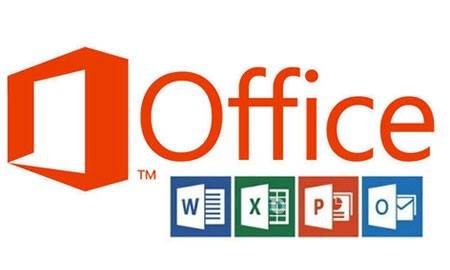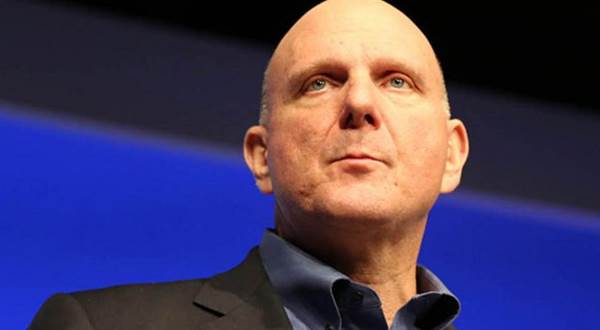Everything To Everyone
It feels like no one quite knows how to
market Microsoft. And maybe that’s true: it’s got to be a pretty difficult
brief. Microsoft is the default choice for many people: most businesses and
large organizations use Windows and Microsoft Office, it’s what most people
learn to use in schools and it’s what most people who don't know very much
about computers use. Even most people reading this, who probably know quite a
bit about computing, will have likely grown up with Microsoft.

Microsoft
is the default choice for many people: most businesses and large organizations
use Windows and Microsoft Office
And while being the default is probably
quite good for Microsoft's cash flow, in some ways, the familiarity people have
with the product must seem like a hindrance. There’s not really much room to do
anything innovative or edgy with the advertising; it just needs to be safe and
reassuring – which isn’t cool.
Also, because Microsoft’s operating
systems, browsers and other software suites are used so widely, on so many
computers, it’s hard to present their products as inherently desirable. Sure,
there are plenty of high-spec computers running Windows, but also the pre-built
special offer PCs sold in supermarket aisles run Windows, and they usually
aren’t very sexy. Apple can get away with promising the world of their sleek,
brushed aluminum machines, because they have control over every aspect of the
product. Microsoft, as a (mostly) software company, can’t really work that
angle in the same way. You can see that it's trying, with its Windows 8
adverts; the operating system looks a bit more exciting, because it’s designed
to be used with touch-screens, which makes it a bit more tactile, but in the
past, it’s been all about people using a mouse to move a cursor around a
screen, which doesn't make for exciting scenes.
Other Issues
Of course, Microsoft’s image problems don’t
just come from its branding and its competitors; there have been real issues
with things the company has done that's caused some ill will towards it. It's
been overly aggressive with its copy protection, most memorably by launching
the much-hated Windows Genuine Advantage anti-piracy program. It's been overly
keen to push people away from versions of its products it considers out of
date, like Windows XP, even though the users still seem to like using them and
don't want to upgrade to new and unfamiliar versions of the same thing. It's
forced other upgrades on its customers, like changing Hotmail to Outlook
online, without making sure everything was working properly beforehand. Its
products are often expensive and don't always work as well or as intuitively as
users would like.

Outlook
online
And then there's Windows 8. Windows 8 has
caused all sorts of problems because the user interface, which had remained
largely similar for years, had suddenly been significantly updated and many
people just couldn’t get used to it. Microsoft was accused, not for the first
time, of being out of touch with its customers. Microsoft can't win, really:
either it plays things safe, doesn’t change much and gets criticized for not
moving with the times, or it tries to do something new and gets criticized for
leaving its customers behind. Without wanting to make Microsoft out to be the
victim here, it’s hard not to sympathize a little bit with that predicament.
Embracing Geekiness
Can Microsoft ever change the way the world
thinks about it? What could it do to make us feel more warmly towards it as a
company? Maybe what it needs to do is embrace its uncool image. Geeks have
never been cooler than they are right now and that’s something Microsoft could
maybe exploit. A campaign that acknowledged that maybe Microsoft isn’t edgy or
daring, but rather safe, familiar and reliable – in a non-embarrassing way –
might go some way to generating some goodwill. Or maybe Microsoft just needs to
stop caring about brand perception and just get on with producing software that
users actually enjoy using, because as much as many of us like to whinge,
things aren't actually that bad, are they?
Steve Ballmer, CEO
When most people think of Microsoft, they
think of Bill Gates. A bespectacled, neatly but not particularly fashionably
dressed, somehow earnest-seeming man. However, Gates stepped down as CEO of
Microsoft in 2000 and was replaced by Steve Ballmer.
Ballmer isn’t really a household name and
to most tech geeks, he’s probably best known for his “developers, developers,
developers, developers” rant at a conference in 2006 (he’s repeated the
performance since, just to make matters worse). There’s a kind of perception
that Ballmer is a buffoon; he’s even referred to himself as “monkey boy”.

Steve
Ballmer, CEO
However, that silly image is at odds with
Ballmer’s actual career to date: he was hired by Gates when Microsoft was just
a tiny 30-person company and rose steadily through the ranks as the company
grew, heading up various divisions before becoming president then CEO. Under
his leadership, Microsoft’s annual profits have skyrocketed and new products
including cloud computing software and the Xbox gaming system.
He hasn't quite managed to get out from
Gates’s shadow yet, though. His overly exuberant on-stage performances attract
plenty of derisive YouTube comments, but don't seem to actually affect
Microsoft's overall image. And thanks to the perceived failure of Windows 8,
many analysts and former Microsoft employees seem to think Ballmer needs to
step down for the company to flourish. Could another change of leadership
change Microsoft's image for the better? It'd definitely be interesting to see
who it would hire.